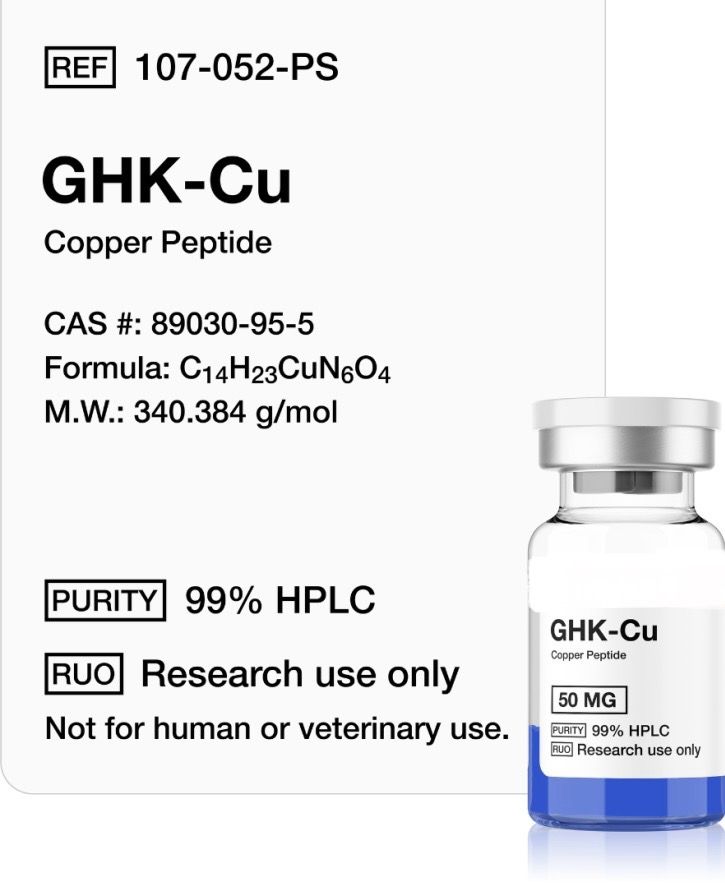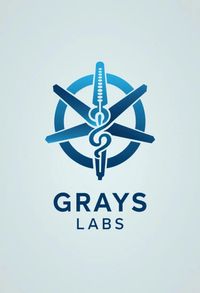GHK-Cu 50mg Copper Peptide
| Quantity | Price per item | Discount |
| 3 items | $67.00 | 4% off |
| 5 items | $65.00 | 7% off |
GHK-Cu is a natural peptide in human blood plasma, urine, and saliva. Research in animals reveals that GHK-Cu can improve wound healing, immune function, and skin health by stimulating collagen, fibroblasts and promoting blood vessel growth. There has been evidence that has shown that it acts as a feedback signal that is generated after tissue injury. It also suppresses free-radical damage and thus is a potent antioxidant.
GHK-Cu Research
1. GHK-Cu and Skin Healing
GHK-Cu is a natural part of human blood and, as such, has been found to play an integral role in skin regeneration pathways. Research in skin cultures has found that GHK stimulates the synthesis and breakdown of collagen, glycosaminoglycans, and other extracellular matrix components like proteoglycans and chondroitin sulfate. At least part of this effect is mediated through the positive recruitment benefits that GHK-Cu has on fibroblasts, immune cells, and endothelial cells. The peptide draws these cells to the site of injury and appears to coordinate their activity in repairing the damage[1].
GHK-Cu is a common component of skin-care and cosmetic products. It improves elasticity of the skin while tightening and firming. It has also been shown to reduce damage due to sunlight, reduce hyperpigmentation, and reduce the appearance of fine lines and wrinkles[']. The ability of GHK-Cu to modulate collagen synthesis is important in reducing the appearance of scars, preventing hypertrophic healing from taking place, smoothing rough skin, and repair the structure of aged skin. These roles of GHK-Cu are mediated partly though its ability to boost levels of transforming growth factor-B[?]. It is likely that the peptide works through several different biochemical pathways and that it has effects and the level of gene transcription[3].
Research in mice shows that GHK-Cu increases the rate of healing following burn by as much as 33%. It appears that besides recruiting immune cells and fibroblasts to the site of injury, GHK-Cu also encourages the growth of blood vessels(4]. Burned skin is often slow to regrow blood vessels due the cauterization effect, so these findings open up a new pathway for improving wound care in burn units and accelerating healing.

